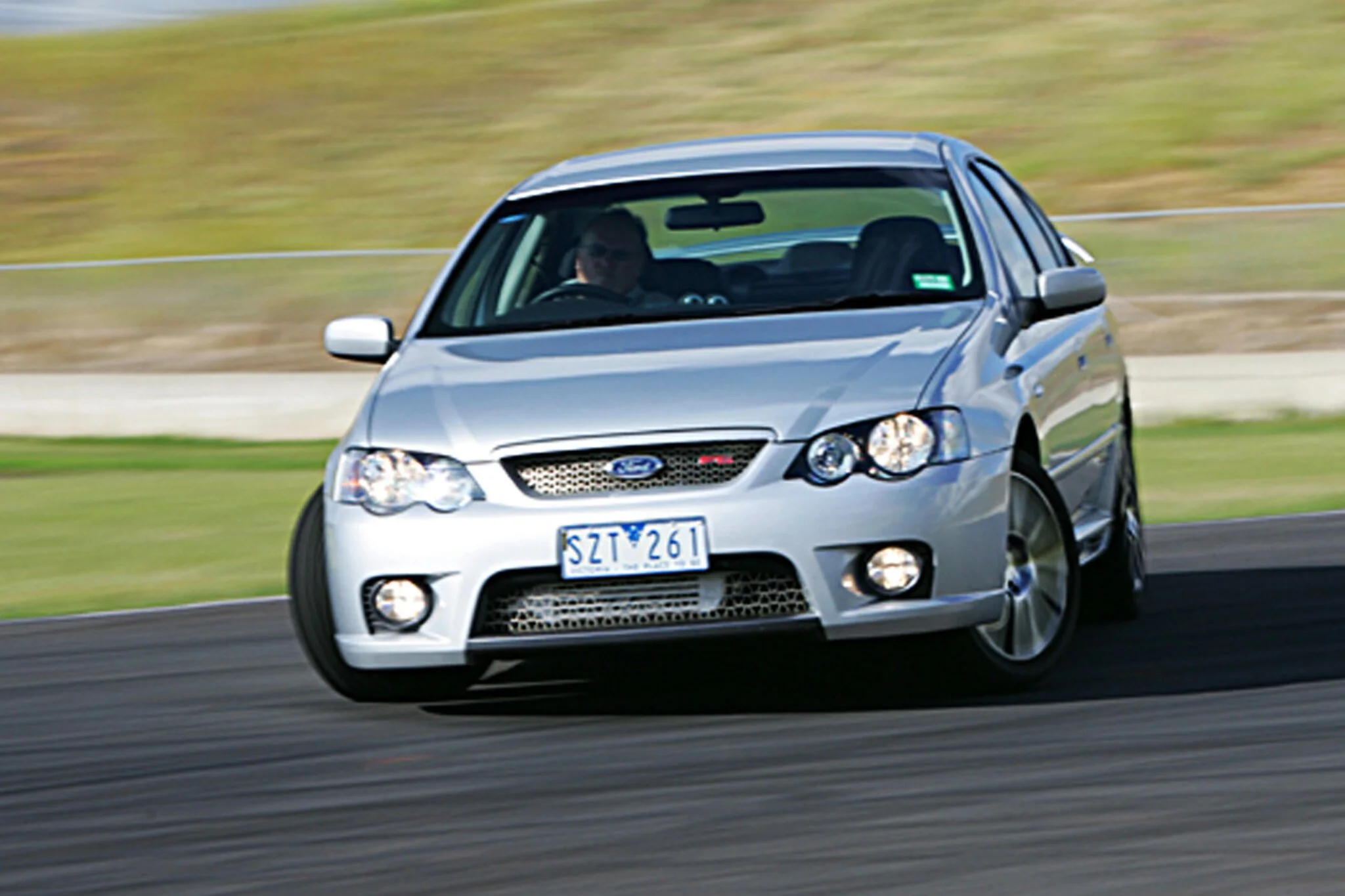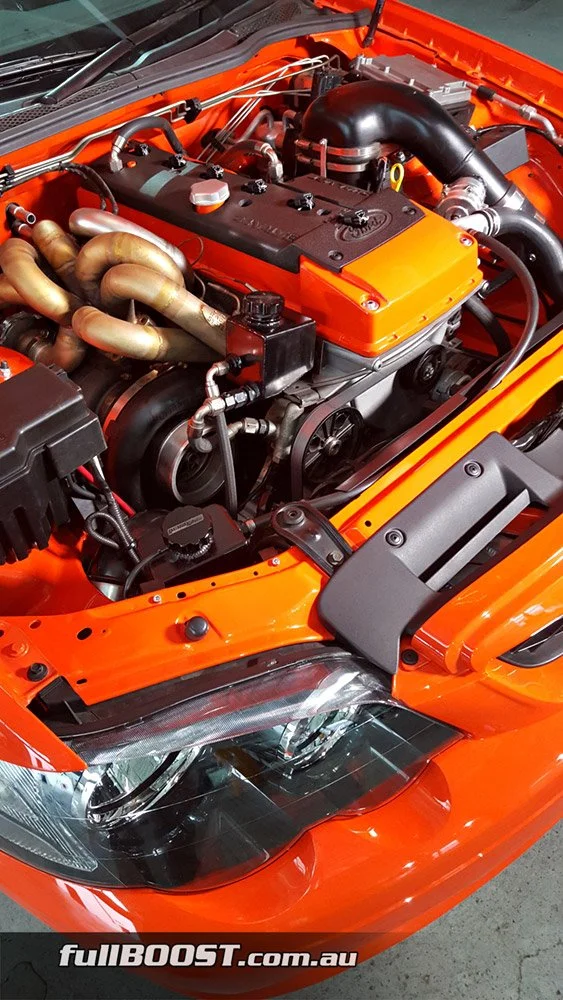Engine-pedia: Ford’s ballistic Barra 6-cylinder
The world knew all about Nissan RB and Toyota JZ 6-cylinder turbo engines, marvelling at the ease which the Japanese wunderkinds made power. However, shortly after the turn of the Millennium a new challenger appeared Down Under in the form of the Ford Barra. Despite only being produced from 2002-2016 in Australian Falcon-based models, this four-litre DOHC inline six is today a legend in the global performance community thanks to its deep-breathing cylinder head, massive capacity, and donkey-strong engineering.
The Barra engine is the culmination of decades of Ford Australia’s inline six engine development, replacing the older SOHC Intech engine. The Barra’s robust design, huge four-litre capacity, and high-flowing DOHC cylinder head are the secret to its legendary power and torque-producing capabilities.
Featuring a bore and stroke of 92.26mm by 99.31mm the under-square format favours torque and with all Barras featuring 3984cc capacity these engines produce rude amounts of twisting force. There aren’t many ways to get around the Barra’s huge dimensions, weighing in at around 220kg (485lb) dry, and taping up 788mm long, 668mm wide, and 729mm tall.
The cylinder heads use Variable Cam Timing on both intake and exhaust camshafts, while the firing order of 1-5-3-6-2-4 keeps the big four-litre running smooth. Renowned for quiet, torque-rich behaviour these engines were the mainstay of Ford Australia’s 6-cylinder models from 2002 to 2016, which meant hundreds of thousands of them were made, and so they were at one point more common than cold beers in a Sydney pub on a hot Friday afternoon.
BA-BF Falcons and SX/SY Territory SUVs used a front-hump oil pan with the sump in the front, while FG Falcons and SZ Territories switched to a rear-hump sump and this oil pan is favoured among people wanting to swap the Barra into classic RWD cars.
There are also a plethora of aftermarket options for swappers, and the high-quality metals used in the original oil pans have been found to be easily welded and modified.
The Barra engine family is divided into naturally aspirated (NA), turbocharged (T), and gas (LPG) variants, with the power output code reflecting the engine's rating in kW .
NA Barras engines formed the bulk of Ford 's family and commercial vehicles from the 2002 BA Falcon through to the final FG X models in 2017. The NA Barras were a revolution in 2002 with 182kW (244hp) at 5250rpm, some 30kW more than the rattly, tired Holden 3.8-litre V6.
Compression ratios climbed from 9.7:1 in NA BAs to 10.3:1 in BF, which was maintained through the Aussie Falcon run. This (and dual VCT cam control) helped power climb to 190kW (255hp) in the BF (2005-2008), before Ford switched to a plastic intake manifold and squeezed 195kW (261hp) for the FG-on models.
It was the 240T Barra turbo engine, which had been internally codenamed “Seagull” (because Ford figured it was going to “shit on everything”), which stopped everyone in their tracks. When it launched the JDM turbo scene was at its peak and Aussie muscle fans had been getting hosed at stop-light grand prixs by boosted up Skylines, WRXs, Silvias, and Evos for years.
Finally, they had a four-litre twin-cam straight-six built for boost. It didn’t take long for tuners to work out the stock GT3582R (switched to a smaller GT3576 in FB models) was a 600hp turbo and the Barras could handle massive power once head studs, valve springs and oil pump gears were all upgraded.
Turbo Barras are distinguished by a signature Red (XR6 Turbo) or Blue (FPV F6) valve covers.
Kicking off with the Barra 240T the big “4JZ” made 240kW (322hp) from factory and used an 8,7:1 compression ratio in the iron block/alloy head combo. The launch of the hot rod FPV F6 Typhoon sedan and Tornado ute released the Cosworth-fettled Barra 270T (270kW, 362hp) which boasted the same compression ratio but with stronger internals.
Ford dropped the compression ratio back to 8.47:1 for the 310kW (416hp) Barra 310T in the FG FPV F6. The most powerful factory Barra is the Barra 325T from the final XR6, the FG X Sprint, which pushed the compression back up to 8.8:1, and offered 325kW (436hp) but could use a “boost scramble” button to run 370kW (496hp) for up to 10-seconds.
As Barras became the darling for mega-power, mega-budget engine swaps punters latched onto the gas-only “green-top” variant, which could be had for as little as $150 for a long motor. Used primarily by taxi fleets, these gas-only “green top” engines demonstrated the platform's incredible durability under high-mileage commercial use. Boasting a much stronger bottom-end than NA Barras, the gas engines also boasted a higher compression ratio: 10.3:1 in the 156kW (209hp) BF-FG LPG engines, or 12:1 in 198kW (266hp) EcoLPi engines. The difference between these green-top Barras is the LPG injection system as the early engines use a traditional Vialle Carburettor system, and the EcoLPi uses liquid injection.
While renowned for its strength, the Barra engine has a few key weaknesses that must be addressed, particularly when modified for high power. As with any aging engine you’re going to cram boost into the coil packs will likely need attention, and stock balancers on high-km engines are prone to disintegrating.
The stock cast iron oil pump gears crack (or shatter) under high-RPM or high boost-pressures, which leads to catastrophic engine failure. Billet oil pump gears are considered a stage one upgrade for all Barras, especially given their advanced age today, and the same is true for the stock valve springs which are weak and are upgraded as soon as more boost is fed into a Barra.
NA Barras feature weaker con rods than turbo models, and are a risky option above 300rwkW. Even turbo Barra rods are risky past 500kW. While gas “green top” Barras have become massively popular over the last decade due to their cheap purchase price and stronger bottom-ends, these engines suffer valve recession issues due to heat in chambers, and this requires a full cylinder head rebuild.
All FG and FG X engines are also known to have issues with camshafts delaminate, which requires a significant head rebuild.
The ultimate reputation of the Ford Barra comes from its monumental tuning potential. The robust cast-iron block and thick main bearing webbing allow the stock long block (with upgraded OPGs and valve springs) to reliably exceed 500 kW ( 670 hp) at the wheels .
In the performance world, the Barra stands shoulder-to-shoulder with legends like the Toyota 2JZ and Nissan RB engines —a true Australian icon that continues to dominate the drag strip and drift scene .





